It really is happening this time: after a long restoration process that saw changed plans, controversy and protests, Dún Laoghaire Baths are about to reopen.
A year ago, after four years of restoration work, we wrote that the baths were nearing completion and set to open in the late spring of 2022. Late spring passed, as did a revised date in late August, and then one in October. Now, at last, the long-derelict entrance building, and the enormous hoarding that blocked the seafront of the south Co Dublin former port town since 2018, are history: passersby have seen the site take shape, tantalisingly, for the last several months, as finishing touches and snag lists apparently dragged on.
[ Inside the new Dún Laoghaire Baths (spoiler: don’t expect baths)Opens in new window ]
From the afternoon of Tuesday, December 13th, all going to plan, the extensive outdoor spaces of the Baths site will be open to the public, completing a walk linking Sandycove to Dún Laoghaire’s East Pier, and creating a public amenity, and sea-swimming access for the town, sure to rival the Forty Foot bathing spot this Christmas morning.
Standing on the front step of the Edwardian entrance pavilion with Dún Laoghaire-Rathdown senior architect Bob Hannan, on the restored original “BATHS” mosaic, we look ahead. Through the opened grand double-doors, through the lobby where years ago swimmers bought tickets at the hatch on the left (the reconstructed wooden panelling familiar to those with long memories), through the light-filled cafe-to-be, with its series of double French doors, through to the sea beyond. It’s a breathtaking vista from the street.
READ MORE
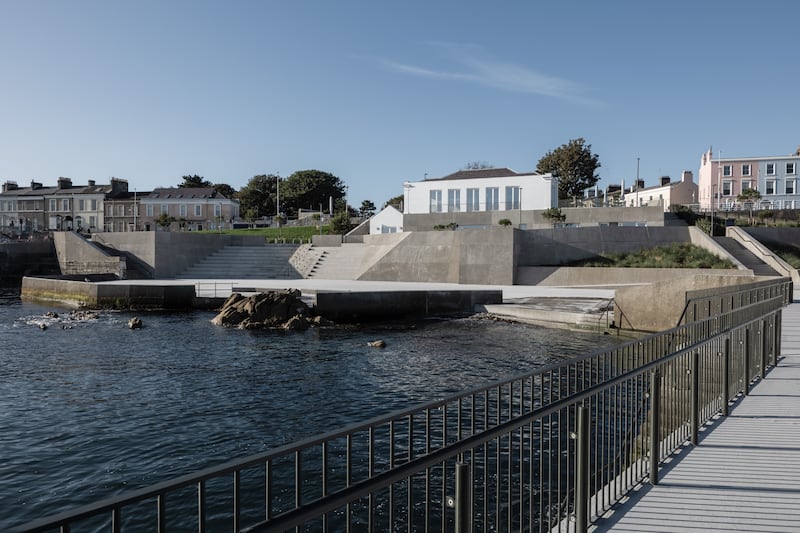
It’s pretty breathtaking from the lower “deck” outside too: a vast plaza-cum-amphitheatre with polished granite underfoot (with a sea-backdrop for performances); a reconstructed Edwardian gazebo with a timber and zinc/lead roof in the coastal garden; walkways at upper and lower levels linked by steps and planting and viewing points, and walls of concrete and exposed crushed Dalkey granite, with hues echoing the east and west piers. Jutting into the sea is a 35m-swimming jetty with Mark Richards’ 3m high Roger Casement sculpture at the end – on whose head a seagull has taken up regular residence. The jetty, for swimmers and kayaks, angles towards Sandycove Pier across Scotsman’s Bay, with a simple changing shelter and built-in seating along its length (evoking Sandycove’s swimmers’ bench).
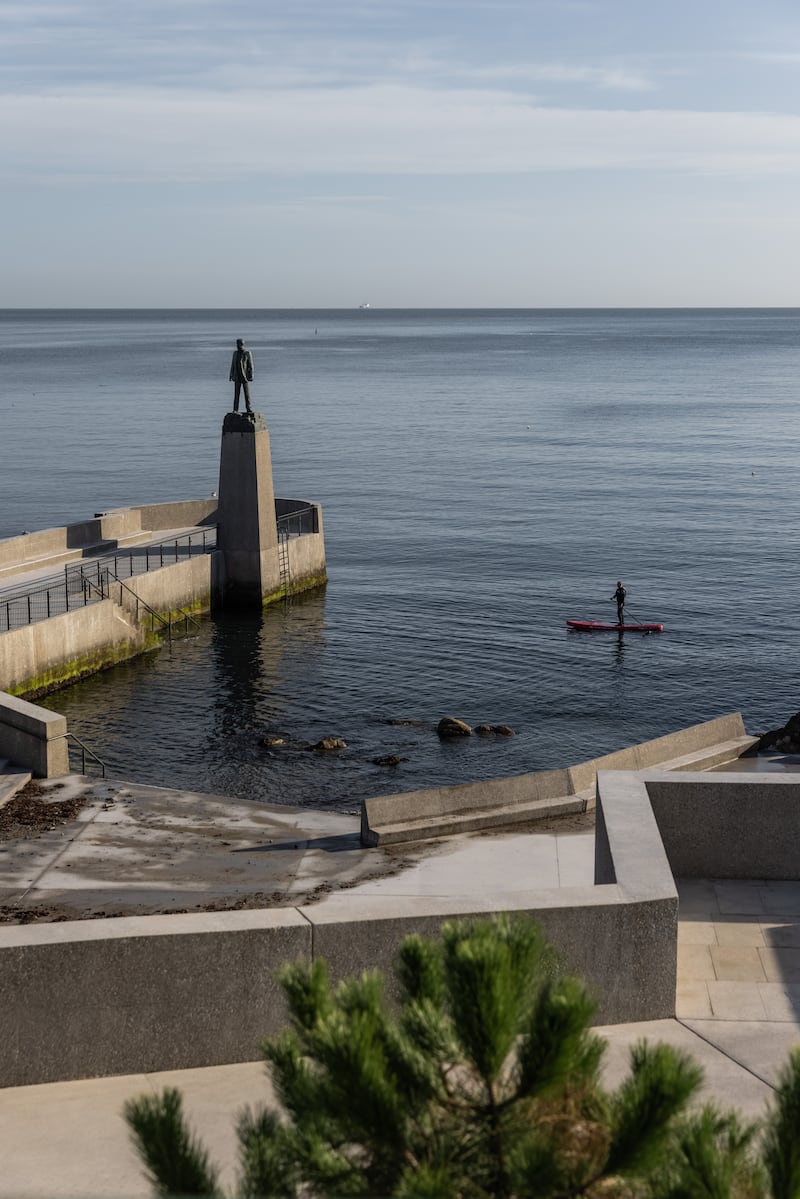
A small pebbly beach has formed in the knuckle where the jetty joins the plaza. There are steps from the jetty into the water for swimming, and while there’s a ring of rock armour below the surface at the end (there will be warning notices about rocks), we imagine there will be plenty of jumping crack where it’s safe.
Hannan talks about how it all creates new views of the urban coastline, which evolved historically via human intervention: the battery fort and Martello tower in Sandycove and Dún Laoghaire’s piers. They used historical maps and pictures to generate ideas of form, and it fits into its environment by reverting back to the line of the original rocky shoreline (unlike the original baths, which were built orthogonally to the shore), and the new walls and walkways’ twists and turns reflect the original formation, making for a visually interesting coastal promenade. It’s punctuated by strong vertical markers, so that, Hannan points out, the new Casement memorial speaks to the Boyd memorial (1861), Anemometer (1852), the two lighthouses on the piers.
Removing the dilapidated buildings behind the old pavilion allowed sunlight into the site, and enables Newtownsmith’s seafront Yellow Brick Road walk to connect with Dún Laoghaire’s East Pier at various levels and with multiple sitting and viewing points.
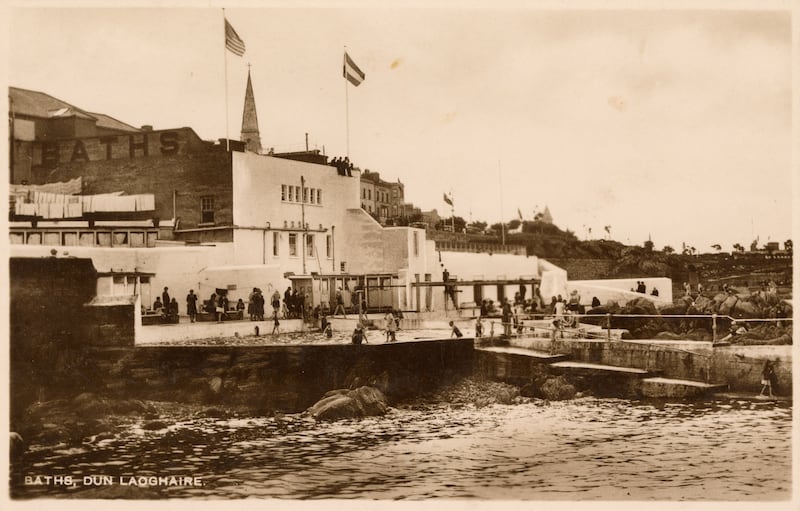
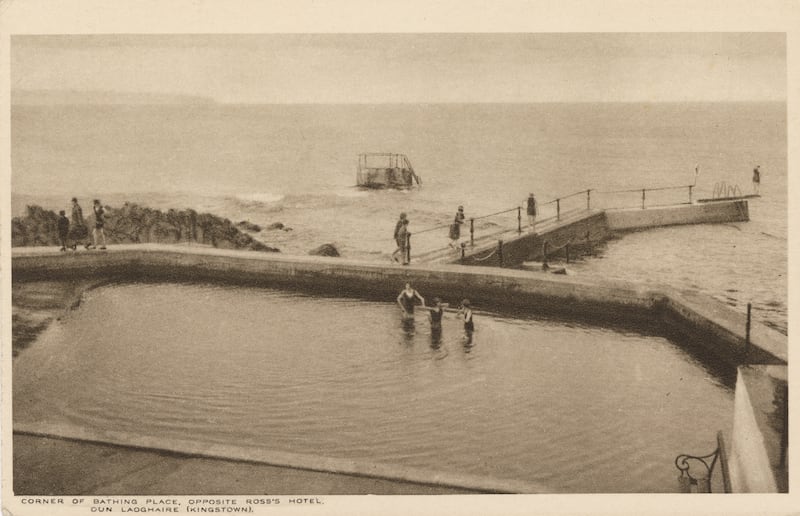
The “DUN LAOGHAIRE BATHS” laser-cut metal lettering on the wall of what will be the cafe terrace is stylish; its attractive Verdigris patina is a reminder of the long time the project has taken. It’s also unintentionally ironic, given that there are in fact no longer any baths at Dún Laoghaire Baths. Yet, anyway.
Baths remains in the title as a description of the idea of what this place is, and how it’s tied up in its memory.
The Royal Victoria Baths, built in 1843, were popular for bathing. They were renovated in 1911 and in the 1930s, with a large swimming pool and tidal children’s pool; heated indoor pools came in 1970 and Rainbow Rapids waterslides in the 1980s. Many locals and visitors still recall a summer idyll.
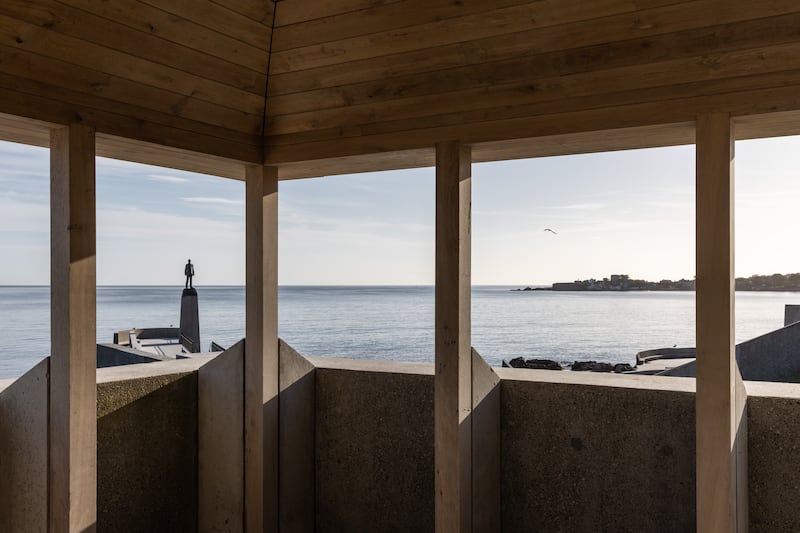
But in 1997 Dún Laoghaire Baths closed, and were derelict by the early 2000s; for decades it was a blight on the seafront, a lost opportunity for a public facility.
Over several years, a series of elaborate council proposals to privatise it were rejected after Save Our Seafront public protests. Eventually a more modest, publicly-owned, free-to-all amenity was settled on in 2015. But it did not include a pool.
A motion from People Before Profit councillor Melisa Halpin (supported cross-party) has retained an open seawater pool as an objective in the draft county development plan, for a future development phase. With that in mind, the baths are future-proofed, and a tidal pool could be added relatively simply, says Hannan, subject to planning, funding and a council decision to do so. A rectangular concrete void, 38m x 9m, has been left below the surface of the amphitheatre area, with a concrete “lid” covering it, allowing for the possible reinstatement of a tidal pool. Before any decision on that, there’s remediating the (still tatty) walkways between the reconstructed gazebo and the East Pier, likely to be done in 2023-24.
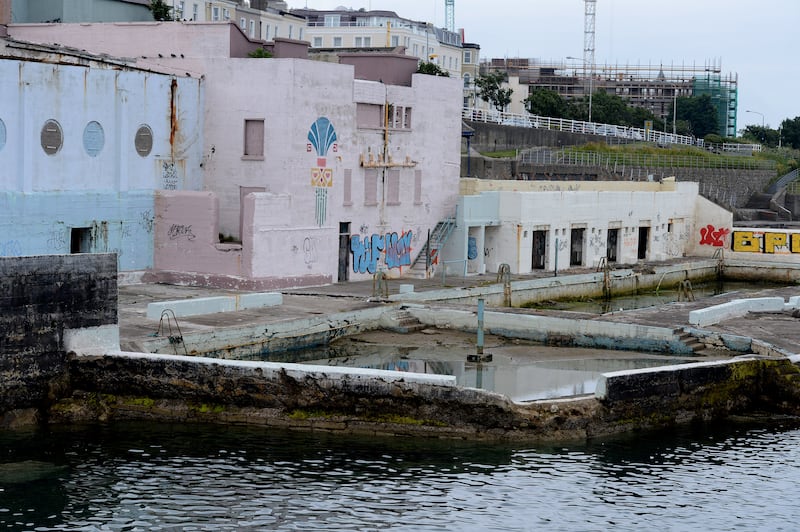
The project was designed by Dún Laoghaire-Rathdown (DLR) County Council architects, with A2 Architects as executive architects, and there’s been ongoing support from DLR chief executive Frank Curran and Cathaoirleach Mary Hanafin, says Hannan.
The build was slow. The site was in a bad state, requiring significant structural work to underpin and stabilise the building and restore walls along the embankment shoring up Queens Road. Additional challenges and delays came from the rocky coastline, temporary examinership (of builders Mantovani), accidental plastic fibre pollution (the cleanup cost was borne by its construction partner Siac) and a global pandemic. Even the finishing stages have crept along at snail’s pace. “It’s not the first complex construction project” that’s gone over time, Hannon says. He adds wryly: “It’s taken longer than the first World War”
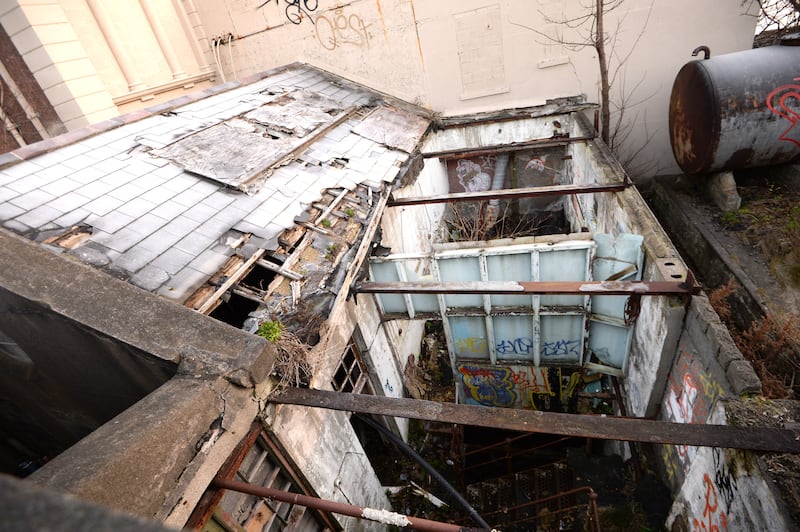
But Hannan is very pleased with the result. “This is the nice part. It’s quite special.”
The compact, two-storey, 400 sq m pavilion building will not open until the cafe is kitted out, likely by spring. The tender for an operator has closed, there was a lot of interest and a decision is likely around Christmas. The cafe is at street level. Where once women and girls went down one stairs, and men and boys the other, there’s now a single, fine stairwell to the lower level.
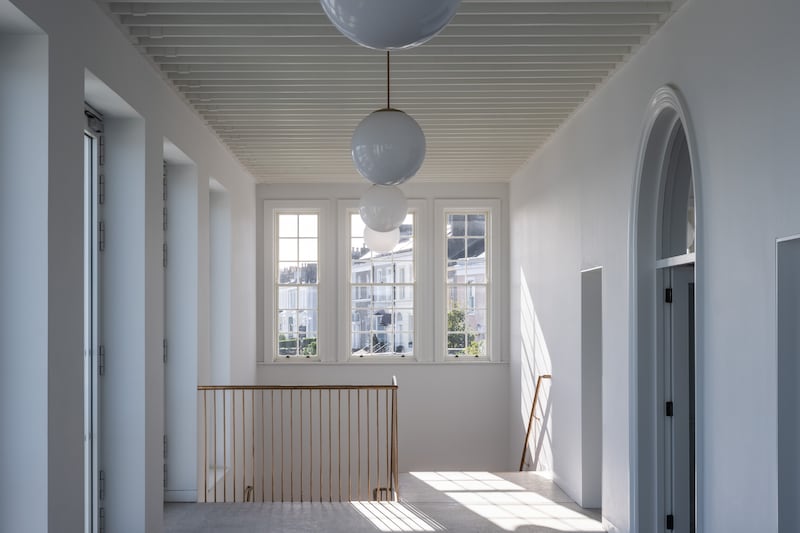
Though it’s north-facing, it’s bathed in warm light, coming from all four sides, including the fanlight over the main door, and five double French doors. There’s no balcony, and the doors open out on to the water, “like when you’re on holidays in Italy, and the doors are to a cliff down to the sea”, says Hannan. To the side, another door is to the street-level terrace, with a view of the new jetty. He smiles, imagining sitting here drinking tea and drinking in the view. “I’m going to spend my retirement here!”
Also at this level is a small food-prep room, and a spacious, bright and well-equipped “changing places” bathroom, so those with disabilities can swim and enjoy coastal walks.
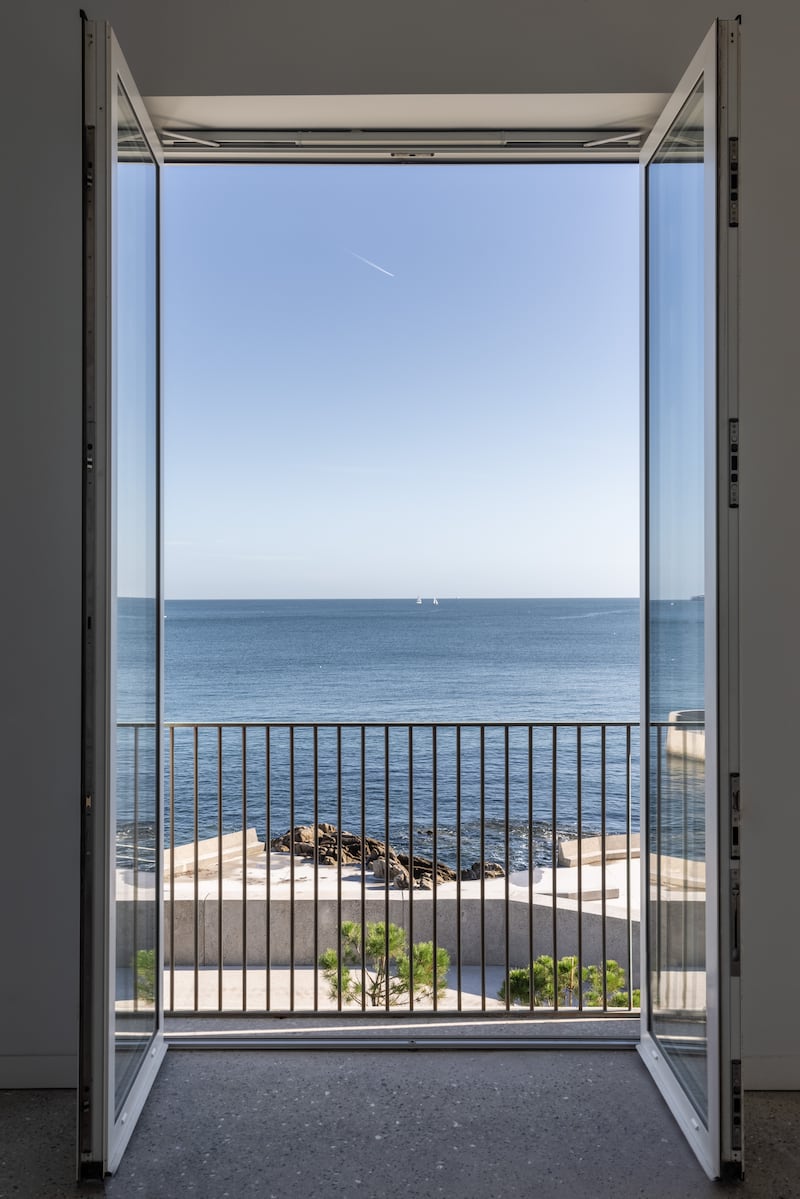
A lift goes down from street to ground level, with a terrazzo floor of polished concrete with seashells embedded. Here there are toilets, access to outside and three artists’ studios: simple workspaces with a long bench, Belfast sinks and sea views, with Casement sitting exactly on the horizon. The former “drying house” beside the pavilion, with exposed timber trusses and an enormous door out to the sea, will be a small exhibition space, programmed by DLR arts office. You could imagine small readings, recitals or art classes in there. Beyond that, the car park beside the site, which was used for the build, is being reinstated.
The projected €13.4 million budget, mainly funded by the council, has been overshot, and the final cost is €18 million. All the same, Hannan observes that with significant construction inflation now, it’s unlikely the project could be delivered for the same money if tendered today.
Dún Laoghaire last month won the Academy of Urbanism’s Great Town award in London for connecting urban villages, bathing places, walks and parks along the coast, and its “tactical urbanism” during the pandemic.
[ Dún Laoghaire named Europe’s Great Town of 2022Opens in new window ]
The Baths renovation builds on this; it’s been a long road, with many hiccups and sometimes mystifying delays. But it also feels like a significant addition to Dún Laoghaire’s urban coast, both a public amenity and a striking, sympathetic architectural statement, part of the 21st century urban coastal architecture remaking this fine port town. (Plus: let’s not forget the tidal pool, one day.)
A long road, but it’s there for the long haul. “The key thing, in my head, is that it’s been worth the wait”, says Hannan. “It will be intergenerational, and it’ll outlive us all.”

















